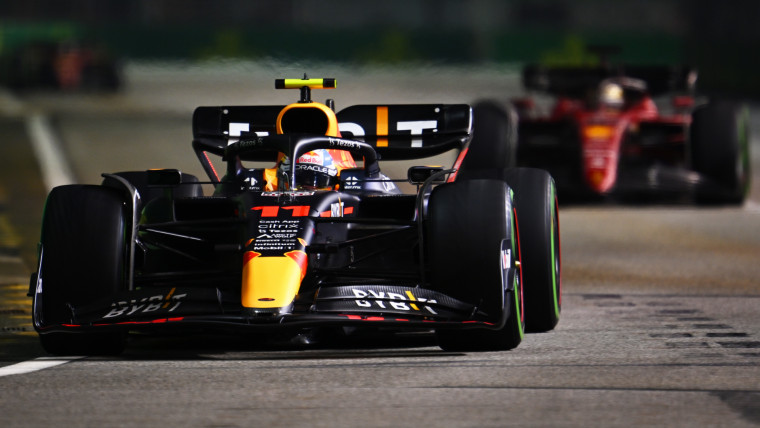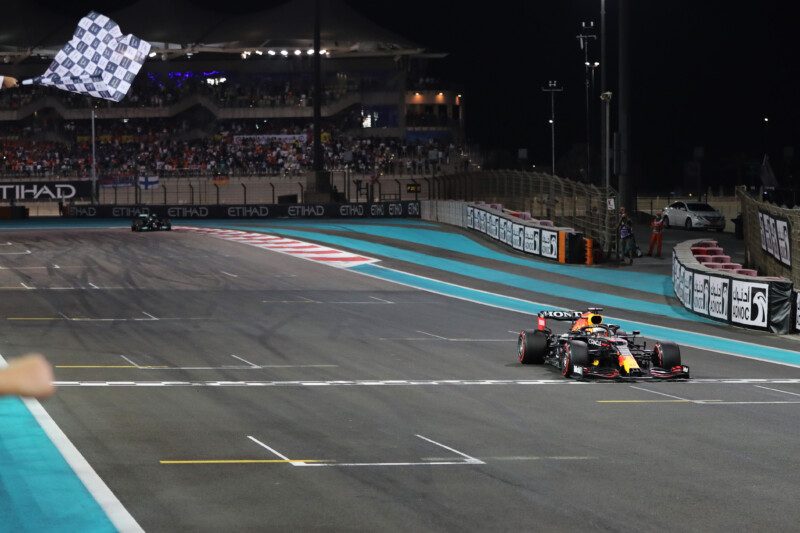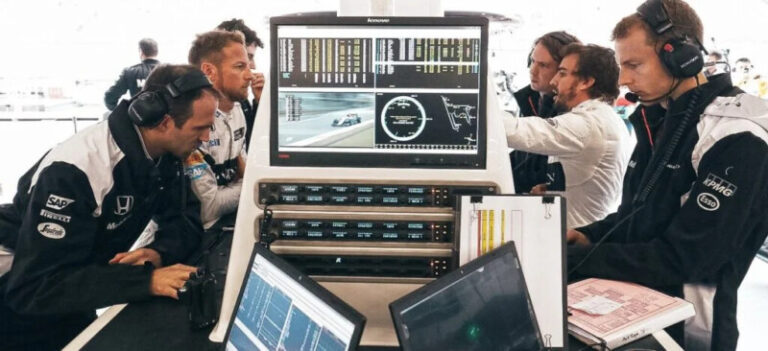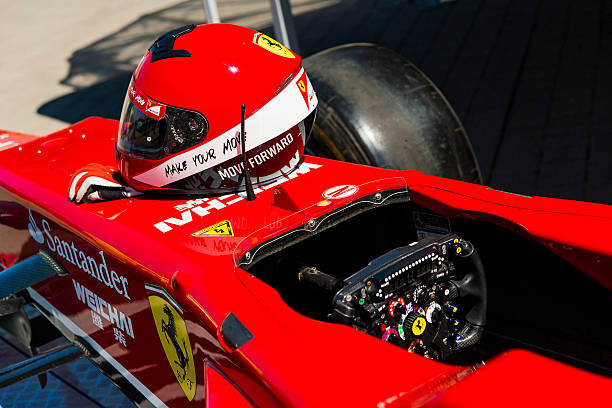How Many Laps is a Formula 1 Race?
Formula 1 races vary in length and duration, with each grand prix having a different number of laps and total race time. As an avid F1 fan, I’ve always been fascinated by the unique formats of these legendary races and wanted to take a closer look into what determines the number of laps and overall duration of a race weekend.
In this article, I’ll be exploring the key factors that shape the length of an F1 race, from the set distances to time limits. Strap yourself in as we dive into the world of laps, regulations, records, and more in the exhilarating sport that is Formula 1.
Understanding the F1 Race Weekend Format
Before looking at laps and length, it’s important to first understand the general race weekend format in Formula 1.
The traditional F1 weekend includes:
- Two 1-hour practice sessions on Friday
- A third practice session on Saturday morning
- Qualifying on Saturday afternoon to set the grid for Sunday’s race
- The main grand prix held on Sunday
However, in 2021, F1 introduced sprint races at certain events to add a new competitive element to select weekends. Here’s how the sprint race format shakes up the timeline:
- One practice session on Friday
- Qualifying on Friday evening to determine Saturday’s sprint race grid
- A sprint race on Saturday to set the lineup for Sunday’s grand prix
- The main grand prix on Sunday
So the number of sessions and events vary, but races always take place on Sundays no matter the format. With the general layout covered, let’s move on to the lap counts.
How Many Laps is a Formula 1 Race

Formula 1 races must run to a minimum set distance, not a predetermined number of laps. The Sporting Regulations state that grand prix distances should be at least 305 km (189.5 miles), except for the Monaco GP which has a shortened length of 260 km (161.5 miles).
This means that the number of laps will vary depending on the circuit length and designated race distance. The longer the track, the fewer laps needed to reach the required mileage.
For example:
- Monza is one of the shortest circuits at 5.793 km. So the Italian GP requires at least 53 laps to meet the 305 km minimum.
- Spa-Francorchamps in Belgium is the longest track at 7.004 km. Therefore the Belgian GP only needs 44 laps to reach 305 km.
Sprint races also follow set distances but are much shorter than full grand prix. The sprint race length in 2022 was 100 km, split into various lap counts between circuits.
Clearly, F1 does not follow a one-size-fits-all policy when it comes to laps. The circuit itself is the biggest factor determining lap count.
Scheduled Distances for the 2024 F1 Season
To see these concepts in action, here is a breakdown of the scheduled race distances and lap counts for each 2024 F1 grand prix:
| Grand Prix | Circuit | Laps | Circuit Length | Race Distance |
|---|---|---|---|---|
| Bahrain | Bahrain International Circuit | 57 | 5.412 km | 308.484 km |
| Saudi Arabia | Jeddah Street Circuit | 50 | 6.174 km | 308.700 km |
| Australia | Albert Park Circuit | 58 | 5.303 km | 307.574 km |
| China | Shanghai International Circuit | 56 | 5.451 km | 305.256 km |
| Azerbaijan | Baku City Circuit | 51 | 6.003 km | 306.153 km |
| Miami | Miami International Autodrome | 57 | 5.410 km | 308.370 km |
| Spain | Circuit de Barcelona-Catalunya | 66 | 4.675 km | 308.405 km |
| Monaco | Circuit de Monaco | 78 | 3.337 km | 260.286 km |
| Canada | Gilles Villeneuve Circuit | 70 | 4.361 km | 305.270 km |
| Austria | Red Bull Ring | 71 | 4.318 km | 306.452 km |
| United Kingdom | Silverstone Circuit | 52 | 5.891 km | 306.198 km |
| Hungary | Hungaroring | 70 | 4.381 km | 306.630 km |
| Belgium | Spa-Francorchamps | 44 | 6.977 km | 306.688 km |
| Netherlands | Circuit Zandvoort | 72 | 4.259 km | 306.648 km |
| Italy | Autodromo Nazionale Monza | 53 | 5.793 km | 306.720 km |
| Singapore | Marina Bay Street Circuit | 61 | 5.063 km | 308.706 km |
| Japan | Suzuka International Racing Course | 53 | 5.807 km | 307.471 km |
| Qatar | Losail International Circuit | 57 | 5.380 km | 306.660 km |
| United States | Circuit of the Americas | 56 | 5.513 km | 304.250 km |
| Mexico | Autodromo Hermanos Rodriguez | 71 | 4.304 km | 305.584 km |
| Brazil | Interlagos Circuit | 71 | 4.309 km | 305.909 km |
| Las Vegas | Las Vegas Street Circuit | 50 | 6.120 km | 306.000 km |
| Abu Dhabi | Yas Marina Circuit | 58 | 5.281 km | 306.293 km |
This schedule shows the variance in lap counts depending on the length of each track, with Monaco being the clear outlier needing 78 laps to reach the shortened minimum distance.
It’s also interesting to see high lap events like Mexico requiring 71 laps on a shorter circuit compared to Spa only needing 44 laps given its longer layout.
The Impact of Time Limits on Race Duration

The number of laps and set distances determine the race length on paper. However, F1 also imposes time limits to prevent excessively long events.
Races have a maximum two-hour window to complete the full distance. If the leader crosses the line after two hours, the race ends at the conclusion of that lap.
The two hour mark rarely comes into play, with most grands prix finishing between 1.5 and 1.75 hours based on pace, safety cars, weather, and other variables.
In the case of a red flag or complete race suspension, F1 grants a maximum three-hour window to allow officials to restart and complete the scheduled distance.
So while laps and distance are the primary factors, time limits provide an insurance policy ensuring fans see a definitive end within a reasonable timeframe. The regulations aim to maximize racing while respecting modern viewing habits.
Rules for Shortened or Suspended Races
Sometimes extenuating circumstances prevent races from finishing all laps or reaching full distance. Heavy rain, crashes, or other issues can disrupt the schedule.
In these cases, F1 implemented rules on awarding points for shortened or suspended grands prix:
- As of 2022, at least two laps (excluding those behind a safety car or VSC) must be completed for any points to be awarded. This avoids repeats of the infamous 2021 Belgian GP where the field earned points despite zero green flag racing laps.
- Partial points are given based on the percentage of the scheduled distance completed before suspension:
- 25% completion = 1 point awarded
- 50% completion = 9 points
- 75% completion = 19 points
This ensures a fair ranking based on the racing that did occur if the full grand prix cannot be resumed under the time limit.
The Longest F1 Race in History
After reviewing the rules and variables around race distance, let’s examine the shortest and longest F1 events on record.
The longest grand prix took place at the 2011 Canadian Grand Prix in Montreal. This legendary rain-soaked race smashed records with:
- 4 hours, 4 minutes total duration
- Over 7 hours counting red flag stoppages
- 6 safety car periods (most ever)
- Several leading changes
The race went down to the wire but finally ended after 305 km and mere seconds before hitting the 4 hour mark. This marathon GP led to tighter time limits being introduced.
The Shortest F1 Race in History

On the flip side, the shortest F1 race occurred at the infamous 2021 Belgian Grand Prix, clocking in at:
- 3 minutes, 27 seconds from start to red flag
- No green flag racing laps
- Cancelled after hours of delays
- Points awarded per regulations despite no proper race
The washout Belgian GP will be remembered for stirring controversy and prompting new rules about point allocation. A mere 3 minutes of action behind the safety car simply didn’t cut it.
Key Takeaways on Lap Counts and Race Duration
After reviewing formats, regulations, and records, key learnings on F1 race length include:
- Races run to set distances (305+ km), not a fixed lap total
- Circuit length determines lap count needed to reach the minimum distance
- Time limits prevent excessively long events
- Safety car and red flag rules allow for shortened or suspended races
- The 2011 Canadian GP (4+ hours) holds the record for the longest race
- The 2021 Belgian GP (3 minutes) stands as the shortest completed grand prix
I hope this deep dive gives you a better grasp of how lap counts and race distances are determined in the fascinating world of Formula 1. It’s a complex yet enthralling sport with many moving parts to orchestrate an action-packed grand prix weekend.
Whether you prefer marathon events like Canada 2011 or rapid sprints like Belgium 2021, there’s never a dull moment when it comes to the unique formats of F1 racing.







